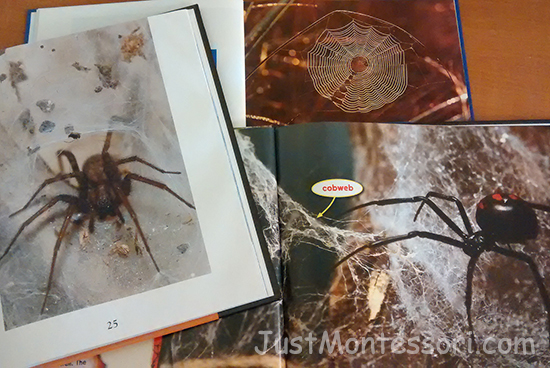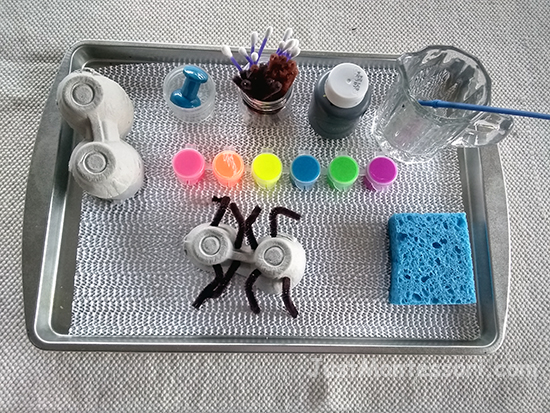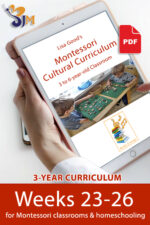Book choices for today:
The Biography of Spices Ellen Rodger
The Very Busy Spider Eric Carle
Space Spinners Suse Macdonald
Spiders Gail Gibbons
Botany: (first circle)
Need for lesson – A variety of spices in different forms and a mortar and pestle.
Botany 23
Today we are going to talk about spices. A spice can be a dried seed, fruit, root, or bark. People mostly use spices to flavor foods in cooking. There are many different kinds of spices. Some seed or dried fruit spices would be fennel, mustard, and black pepper. An example of a bark spice would be cinnamon. Cloves would be a dried flower spice. Ginger and turmeric are examples of root spices. Spices are available in several forms; fresh, dried whole, or ground. Some small seed spices like fennel or mustard can be used whole or in powder form. Whole spices can be crushed or ground up, this helps the flavor and even the smell of the spice to come out. If it is a powder spice, it has been ground up a lot to become a powder. In different parts of the world, common spices are often used in that particular area. In Asia, some common spices are cinnamon, cardamom, and ginger. Spices that are common to Italy, which is in Europe, are spices like oregano, basil, parsley, and rosemary. Today spices from all over the world are often available where ever you may live.
Let’s look at these spices in their different forms. We can learn the names of some spices and have fun grinding up whole spices with the mortar and pestle.
Spice Tray
Additional Works:
Spices Vocabulary Card Set – ( MontessoriPrintshop.com)
Spices Card Set
Art:
Spice Rack – Have pre-cut little spice jars and a variety of spices. Children can glue some spices onto the jars and label. They can enjoy the smell of their art work!
Art
Zoology: (second circle)
Need for lesson – Pictures of spider webs.
Zoology 32
We have learned that spiders are a kind of invertebrate. What are some other things we learned about spiders? Spiders belong to the arachnid family of invertebrates. Today we want to talk about spider webs. Not all spiders spin webs, but many do. Spider webs are threads of silk. Spiders can make as many as seven different kinds of silk, with all different purposes – from making egg cases to hiding. They are mainly used to catch prey, or the food for the spider. The silk is made inside glands of a spiders abdomen, where it is a liquid. When it is drawn out of their spinnerets, it becomes thread-like. Females and immature spiders spin webs and the silk of a web is very strong. Spiders can spin a web almost anywhere. Different kinds of spiders make different kinds of webs. Orb spiders spin orb webs. Funnel spiders spin a web that looks like a funnel. Other kinds of webs made by spiders are the cobweb, meshweb, and sheet web.
Spiders catch and eat some harmful insects, so they help to keep gardens to be free of pests. Spiders also spin webs to protect their eggs and developing young. The egg cases look like eggs, but is actually a case that contains hundreds of tiny eggs, which means hundreds of tiny spiders!

Spider Webs (from: Deadly Black Widows by Natalie Lunis, Spiders by Ann Squire)
Additional Works:
Spider Transfer – These are bowls with spider webs on them. Inside there are plastic spiders that the children can transfer.
Spider Sequence (these are from kidssoup.com)
Hidden Spiders – In a bowl of rice, there are ten small spiders hiding to be found.
Transfer
Sequence
Hidden Spiders
Art:
Spider Sponge Painting – This spider came with a set of bugs.
Egg Carton Spiders – Using two pieces of the egg carton, children can paint them and use pipe cleaners for the legs.
Spider Webs – Children can make thumbprint spiders on a spider web.
Art

Spiders
Songs/Poems:
The Spider in the Web (tune – Farmer in the Dell)
The spider in the web, the spider in the web, the spider in the web,
Spin, spin, oh watch it spin, the spider in the web.
The spider gets a fly, the spider gets a fly, the spider gets a fly,
Spin, spin, oh watch it spin, the spider gets a fly.
The spider gets a ________,
Continue with song, filling in with different kinds of bugs. An idea is to have pictures of different bugs that can be sung tot he song and at circle the children can hold up their bug that is being sung about. I also am thinking it would be a great poem basket song for the shelf!
Circle Activity:
Need – The Very Busy Spider Book from Eric Carle, pictures made into puppets or necklaces of the animals in the story, and gold colored yarn. I found this fun idea on eric-carle.com.
Children are given the necklaces to wear or a puppet to hold of the animals in the story. One child is the spider who hold the yarn. During the reading of the story, as the animals are mentioned, that child stands and will hold onto the yarn, that the fly will take to each different animal. As the story progresses a spider web is formed with the yarn!
Song (CD) choices for today:
There’s a Spider on the Floor Raffi
The Itsy Bitsy Spider The Countdown Kids
A Spider from Behind Storytelling Macmillan
-
 (G) Weeks 23-26$25.00
(G) Weeks 23-26$25.00


